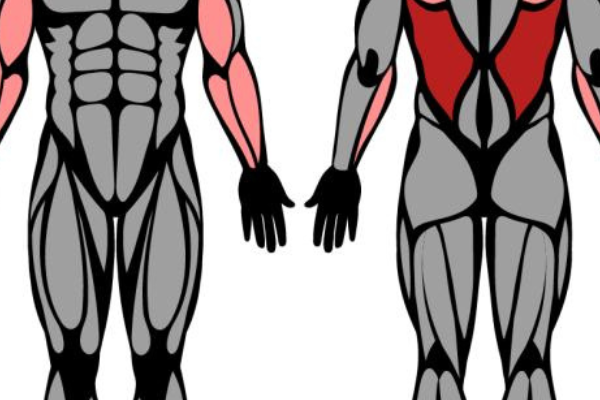
Whey protein 101 has become a staple in fitness and nutrition circles, but for those new to the world of supplements, it can be a bit overwhelming. This guide aims to demystify whey protein 101, exploring its benefits, types, and optimal usage to support muscle gain and overall health.
How We Vet Brands and Products
Before diving into whey protein specifics, it’s crucial to understand how to select a quality product. When evaluating whey protein brands and products, consider factors such as:
- Ingredient Transparency: Look for products with a clear list of ingredients and minimal additives.
- Third-Party Testing: Choose brands that have been independently tested for purity and potency.
- Reputation: Opt for companies with positive reviews and a good track record in the industry.
- Protein Content: Ensure the product provides a high concentration of protein per serving, typically around 20-25 grams.
- Price: While not always an indicator of quality, overly cheap products may cut corners on ingredients.
What Is Whey Protein 101?
Whey protein 101 is a high-quality protein 101 derived from milk during the cheese-making process. It contains all nine essential amino acids, making it a complete protein source. Whey protein is rapidly absorbed by the body, making it a popular choice for muscle recovery and growth. Its effectiveness in promoting muscle gain and overall health has made it a go-to supplement for athletes and fitness enthusiasts.
Whey Protein Supplements Can Help Boost Your Protein and BCAA Intake
Incorporating whey protein 101 into your diet can significantly increase your protein 101 and branched-chain amino acid (BCAA) intake. BCAAs, which include leucine, isoleucine, and valine, play a crucial role in muscle protein synthesis and recovery. Consuming whey protein 101 helps ensure you get these essential nutrients in adequate amounts, especially important if you’re aiming to build muscle.
Types of Whey Protein: Concentrate vs Isolate vs Hydrolysate
Whey protein supplements come in three primary forms:
- Whey Protein Concentrate (WPC): This is the least processed form, containing about 70-80% protein 101 by weight. It also retains some fat and lactose, making it a good option for those looking for a more affordable protein source with additional nutrients.
- Whey Protein Isolate (WPI): Whey protein 101 isolate is processed to remove most of the fat and lactose, providing around 90% protein. It’s ideal for those with lactose intolerance or those looking for a protein with minimal additional calories.
- Whey Protein Hydrolysate (WPH): This form is pre-digested, meaning it’s partially broken down for faster absorption. It’s often used in medical protein 101 supplements and sports nutrition due to its quicker digestion and reduced allergen potential.
Effects of Whey Supplementation on Muscle Mass and Strength
Research supports that whey protein can aid in muscle growth and strength gains. The high concentration of essential amino acids, particularly leucine, helps stimulate muscle protein synthesis. Regular supplementation, combined with resistance training, can enhance muscle mass and strength. Studies suggest that consuming whey protein post-workout can maximize these benefits by providing the necessary nutrients for muscle repair and growth.
Whey Protein Improves Satiety and May Promote Weight Loss
In addition to muscle-building benefits, whey protein can help with weight management. Its high protein content promotes feelings of fullness, which can reduce overall calorie intake. This can be particularly beneficial for those looking to lose weight or maintain a healthy weight. Whey protein’s ability to support muscle mass while promoting satiety makes it a valuable tool in a balanced diet and weight management plan.
Other Health Benefits of Whey Protein
Beyond muscle gain and weight management, whey protein 101 offers several other health benefits:
- Immune Support: Whey protein 101 contains immunoglobulins and lactoferrin, which can boost immune function.
- Antioxidant Properties: The presence of cysteine in whey protein 101 can help increase levels of glutathione, a potent antioxidant in the body.
- Bone Health: Some studies suggest that whey protein 101 may support bone health by enhancing calcium absorption.
Dosage and Side Effects
The recommended dosage of whey protein typically ranges from 20 to 30 grams per serving, with a daily intake of 1 to 2 servings generally sufficient for most people aiming to build muscle. However, individual needs can vary based on factors like body weight, activity level, and overall protein intake from other sources.
Possible side effects of whey protein include:
- Digestive Issues: Some people may experience bloating, gas, or diarrhea, particularly if they are lactose intolerant.
- Allergic Reactions: Though rare, some individuals might have allergic reactions to whey protein.
To minimize side effects, start with a smaller dose and gradually increase as your body adjusts. Opting for whey protein isolate can also reduce lactose-related issues.
The Bottom Line
Whey protein is a highly effective supplement for supporting muscle gain, enhancing recovery, and improving overall health. By choosing the right type of whey protein—whether concentrate, isolate, or hydrolysate—and using it correctly, you can maximize its benefits for muscle building and general wellness. Always consider your individual health needs and consult with a healthcare provider or nutritionist if you have any concerns about incorporating whey protein into your diet.
This article incorporates your focus keywords while providing a comprehensive overview of whey protein, its types, benefits, and usage.
Certainly! Here’s a continuation and conclusion to further elaborate on the topic:
How to Use Whey Protein for Muscle Gain
To effectively use whey protein for muscle gain, follow these guidelines:
- Timing: The best time to take whey protein 101 for muscle gain is within 30 minutes to an hour after your workout. This is when your muscles are most receptive to nutrients and can benefit the most from the quick-digesting protein 101. Additionally, having whey protein as part of your breakfast or between meals can help meet your daily protein needs.
- Dosage: Aim for 20-30 grams of whey protein 101 per serving. Depending on your protein needs and overall diet, you might take 1-2 servings per day. It’s important to balance this with protein intake from other dietary sources to avoid excessive protein 101 consumption.
- Mixing: You can mix whey protein powder with water, milk, or a milk alternative. For a more nutritious shake, blend it with fruits, vegetables, or nut butters. Ensure you follow the serving size recommendations on the product label for accurate protein intake.
- Consistency: For best results, incorporate whey protein into your routine consistently. Pair it with a balanced diet and regular resistance training to support muscle growth and recovery.
Choosing the Best Whey Protein for Muscle Building
When selecting the best whey protein for muscle building, consider the following:
- Protein Content: Look for products with high protein content per serving and minimal fillers. Whey protein 101 isolate and hydrolysate are often preferred for their higher protein concentration and faster absorption.
- Taste and Mixability: Choose a whey protein that you enjoy the taste of and that mixes well with liquids. This ensures you’re more likely to stick with it long-term.
- Brand Reputation: Opt for well-known brands with positive reviews and a history of quality. Third-party testing for purity and accuracy can also be a good indicator of a reliable product.
- Cost-Effectiveness: While quality is important, consider the cost per serving. Sometimes higher-priced products offer better quality, but make sure it fits within your budget.
Frequently Asked Questions
Can Whey Protein Build Muscle?
Yes, whey protein can build muscle. Its high-quality protein content, combined with its rapid absorption, makes it effective for supporting muscle growth when used in conjunction with resistance training.
Does Whey Protein Help Gain Muscle?
Yes, whey protein helps gain muscle by providing essential amino acids that promote muscle protein synthesis and recovery. Consuming whey protein after workouts enhances muscle repair and growth.
How Much Whey Protein Per Day to Build Muscle?
Typically, 20-30 grams of whey protein per serving, 1-2 times per day, is effective for building muscle. This should be part of a balanced diet that meets your total protein needs.
How to Take Whey Protein for Muscle Gain?
Take whey protein within 30 minutes after your workout for optimal muscle recovery. You can also consume it as part of your breakfast or between meals to increase your overall protein intake.
When to Use Whey Protein to Build Muscle?
Use whey protein immediately after workouts to maximize muscle recovery. You can also use it in the morning or between meals to meet your daily protein requirements.
Conclusion
Whey protein is a powerful tool for those looking to build muscle and enhance overall health. By understanding the different types of whey protein, its benefits, and the best practices for its use, you can effectively integrate this supplement into your fitness regimen. Remember, while whey protein supports muscle gain, it should be combined with a well-rounded diet and regular exercise for optimal results.
With the right approach, whey protein can be a valuable asset in achieving your fitness goals and supporting your journey toward better health.
This extended guide provides a thorough overview of how to use whey protein for muscle gain, including practical advice and answers to common questions. Let me know if you need any additional information or adjustments!
If you have any questions for us, you can see more at: heathcarenow, Youtube, Twitter(X),…
See more of our other articles: What is Jaw Pain ?, Catabolism vs. Anabolism: What’s the Difference?, Tennis Ball Massage for Myofascial Trigger Points





